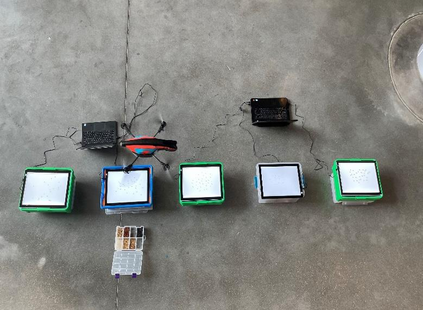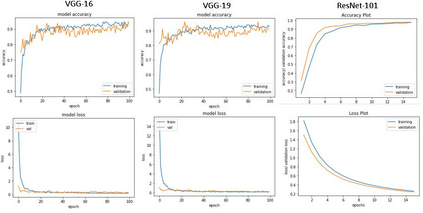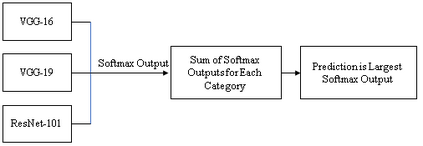Plant breeding programs extensively monitor the evolution of seed kernels for seed certification, wherein lies the need to appropriately label the seed kernels by type and quality. However, the breeding environments are large where the monitoring of seed kernels can be challenging due to the minuscule size of seed kernels. The use of unmanned aerial vehicles aids in seed monitoring and labeling since they can capture images at low altitudes whilst being able to access even the remotest areas in the environment. A key bottleneck in the labeling of seeds using UAV imagery is drone altitude i.e. the classification accuracy decreases as the altitude increases due to lower image detail. Convolutional neural networks are a great tool for multi-class image classification when there is a training dataset that closely represents the different scenarios that the network might encounter during evaluation. The article addresses the challenge of training data creation using Domain Randomization wherein synthetic image datasets are generated from a meager sample of seeds captured by the bottom camera of an autonomously driven Parrot AR Drone 2.0. Besides, the article proposes a seed classification framework as a proof-of-concept using the convolutional neural networks of Microsoft's ResNet-100, Oxford's VGG-16, and VGG-19. To enhance the classification accuracy of the framework, an ensemble model is developed resulting in an overall accuracy of 94.6%.
翻译:植物育种方案广泛监测种子认证种子内核的演变,即需要按类型和质量适当标明种子内核的标签;然而,育种环境很大,种子内核的监测由于种子内核的微小尺寸而具有挑战性; 使用无人驾驶飞行器协助进行种子监测和标签,因为无人驾驶飞行器能够捕捉低空图像,同时能够进入甚至环境最偏远的地区; 使用UAV图像给种子贴标签的关键瓶颈是无人驾驶飞机高度,即随着图像细节较低而导致高度升高,分类精确度下降。 进化神经网络是多级图像分类的极好工具,因为当有一个培训数据集,能密切地反映种子内核核核网络在评估期间可能遇到的不同情况时,这种网络在种子监测和标签中使用无人驾驶飞行器在低空捕捉图像,同时能够进入环境最偏远的地区。 使用自主驱动的Parrot AR Drone 2. 2.0 底摄取的种子的微缩样样本, 文章提出种子分类框架,作为高级图像高度升高的证明模型, 革命性神经- 系统- 系统- 系统- 系统- 系统- GVGAGIS- 系统-VI- 系统-VI-VI-VI-VI-VI-VI-VI-VI-VI-VI-VI-VI-VI-VI-SA-SA-SA-SA-SA-SA-SA-CI-CI-SA-SA-CI-CI-CI-CI-CI-OL 框架。











